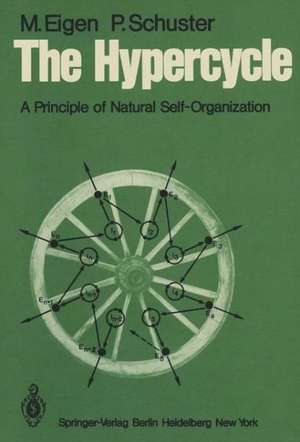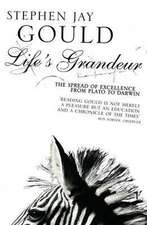The Hypercycle: A Principle of Natural Self-Organization
Autor M. Eigen, Peter Schusteren Limba Engleză Paperback – apr 1979
Preț: 778.80 lei
Preț vechi: 949.76 lei
-18% Nou
Puncte Express: 1168
Preț estimativ în valută:
149.05€ • 154.29$ • 125.97£
149.05€ • 154.29$ • 125.97£
Carte tipărită la comandă
Livrare economică 05-19 martie
Preluare comenzi: 021 569.72.76
Specificații
ISBN-13: 9783540092933
ISBN-10: 3540092935
Pagini: 104
Ilustrații: VI, 92 p. 14 illus.
Dimensiuni: 210 x 280 x 5 mm
Greutate: 0.35 kg
Editura: Springer Berlin, Heidelberg
Colecția Springer
Locul publicării:Berlin, Heidelberg, Germany
ISBN-10: 3540092935
Pagini: 104
Ilustrații: VI, 92 p. 14 illus.
Dimensiuni: 210 x 280 x 5 mm
Greutate: 0.35 kg
Editura: Springer Berlin, Heidelberg
Colecția Springer
Locul publicării:Berlin, Heidelberg, Germany
Public țintă
ResearchCuprins
A. Emergency of the Hypercycle.- I. The Paradigm of Unity and Diversity in Evolution.- II. What Is a Hypercycle?.- III. Darwinian System.- IV. Error Threshold and Evolution.- B. The Abstract Hypercycle.- V. The Concrete Problem.- VI. General Classification of Dynamic Systems.- VII. Fixed-Point Analysis of Self-Organizing Reaction Networks.- VIII. Dynamics of the Elementary Hypercycle.- IX. Hypercycles with Translation.- X. Hypercyclic Networks.- C. The Realistic Hypercycle.- XI. How to Start Translation.- XII. The Logic of Primordial Coding.- XIII. Physics of Primordial Coding.- XIV. The GC-Frame Code.- XV. Hypercyclic Organization of the Early Translation Apparatus.- XVI. Ten Questions.- XVII. Realistic Boundary Conditions.- XVIII. Continuity of Evolution.- References.












